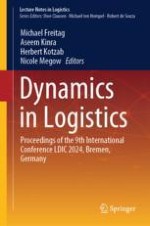This book reports on interdisciplinary research and developments in logistics. It describes cutting-edge methods from business economics, operations research, computer science, and electrical and production engineering, applied to solve current problems in logistics. It includes empirical, theoretical, methodological, and practice-oriented contributions addressing the modeling, planning, optimization, and control of processes in supply chains, logistic networks, production systems, and material flow systems and facilities. Gathering peer-reviewed papers presented at the 9th International Conference on Dynamics in Logistics (LDIC 2024), held on February 14-16, 2024, in Bremen, Germany, and continuing the tradition of previous volumes, this book offers extensive information to both researchers and professionals in logistics. Moreover, it emphasizes current challenges such as those related to sustainable business development and digitalization, proposing novel, effective solutions to cope with current issues in different types of industry.
